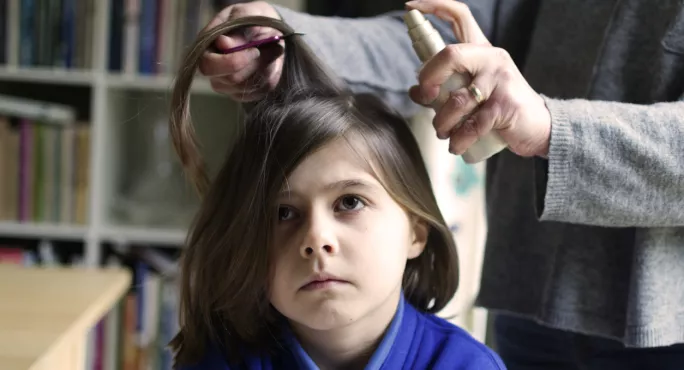- Home
- Why do schools still have outbreaks of nits?
Why do schools still have outbreaks of nits?

Teachers must have thought that, this term, they would have got a break from nits.
The scourge of every primary school would surely be rendered incapacitated by the strict protocols of the Covid-19 restrictions, right? Even though within-bubble social distancing for younger children is not expected, some distancing is still maintained and between-bubble “jumping” of the headlice would surely be impossible.
And yet, anecdotally it is clear that nits outbreaks are still going strong. So what’s going on?
The difference between nits and head lice
First, a little reminder about the difference between nits and head lice.
“Head lice are tiny insects that are found nowhere else on the planet except in the head hair of humans,” explains Cameron Webb, a public health entomologist at the University of Sydney. The term “nits” actually refers to their eggs, he adds.
Webb also makes it clear that notions of head lice being caused by a lack of hygiene are false.
“It is important to remember that head lice are extremely common,” he explains, “and there is no evidence that a head lice infestation is a sign of neglect or poor household hygiene.”
How head lice spread
The reason younger children tend to get them and older children do not is down to how close younger children tend to get to each other.
“Young children are particularly prone to head lice, given their close contact in school and at home,” says Webb.
What might surprise you is just how close that contact needs to be. If you have an image of a springy little insect making amazing leaps across the abyss between kids, then you can scrap that mental picture right now.
“Head lice cannot jump or fly, they need direct head to head contact to move between people,” Webb explains. “And there is only a very small chance that head lice can be spread through the sharing of hats, towels, cloths or other classroom objects.”
Essentially, you need direct head-to-head contact if the little critters are going to transfer to the next host.
Coronavirus restrictions
This means that the chances of head lice spreading between children in class is dramatically reduced if everyone is kept one to two metres apart. “The chances are probably reduced close to zero,” Webb says.
“The highest risk activity is where children are crowded around a book, or a screen or device, with their heads and hair in close contact.”
This can also happen “during story time or other activities when the children may be lying down on the classroom floor”.
Those with long hair are particularly vulnerable, he says.
“While children with short hair can also pick up head lice, those with long hair are certainly more prone to...this is especially the case when hair isn’t tied back in a ‘tight’ hairstyle,” he adds.
Can head lice spread Covid?
So if all these head lice are still making their way between pupils, could they be transferring coronavirus as they go?
Webb says that while head lice do “bite to bloodfeed”, it is not thought they can transfer the virus.
“They are not implicated in the spread of any disease-causing pathogens,” he explains. “The virus that causes Covid-19 isn’t known to be spread by mosquitoes or other biting insects, so it is highly unlikely that head lice would spread it either.”
How to get rid of head lice
They’re still very unpleasant, all the same, and need to be tackled. Where head lice have been identified, the NHS advice says they should be treated as soon as possible-though it adds that there is no need to keep children off school if they have them.
“Lice and nits can be removed by wet combing,” the guidance states. “Ask a pharmacist for advice if you have tried wet combing for 17 days but your child still has live head lice. They may recommend using medicated lotions and sprays.”
Such products can work, but they are far from guaranteed, says Webb.
“One of the challenges in controlling head lice is a growing indication that there is resistance in head lice to commonly used insecticides,” adds Webb. “It is important that the instructions on any head lice treatments are followed closely.
“Try to avoid any home remedies that may be circulating on social media. Some of these approaches that involve the use of essential oils and other chemicals can cause a more severe skin reaction than the bites of the head lice themselves.”
Is your head itching like crazy yet? Mine is. So I leave you with one final thought: if head lice are becoming immune to the things we use to get rid of them, are we destined to live symbiotically with them forever?
Chris Parr is a freelance journalist
Keep reading for just £1 per month
You've reached your limit of free articles this month. Subscribe for £1 per month for three months and get:
- Unlimited access to all Tes magazine content
- Exclusive subscriber-only stories
- Award-winning email newsletters



